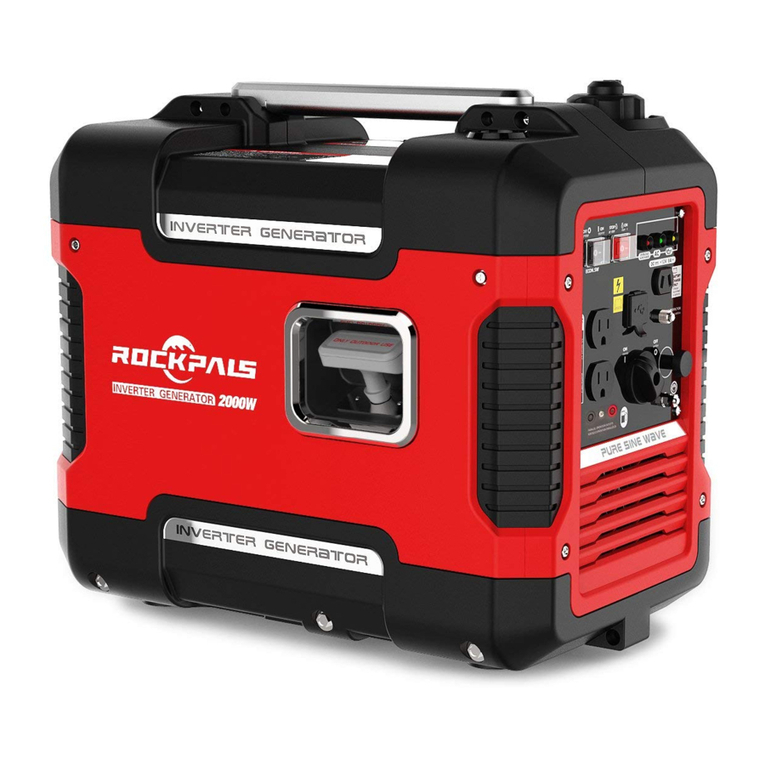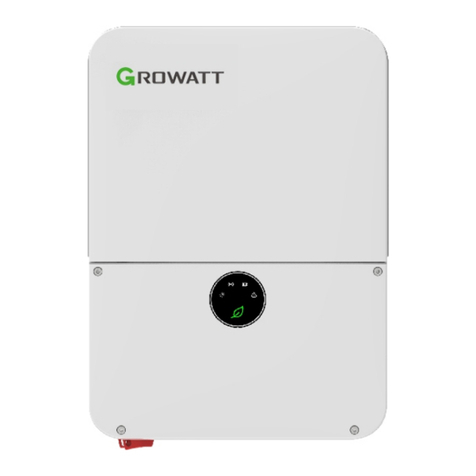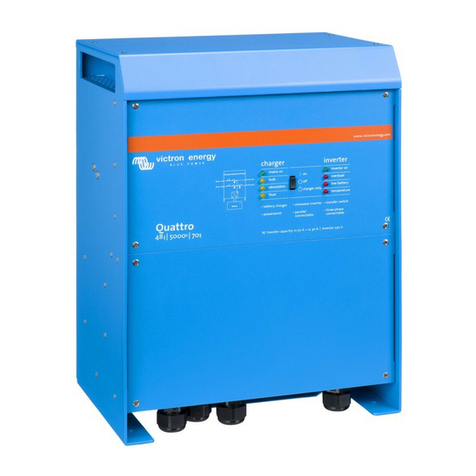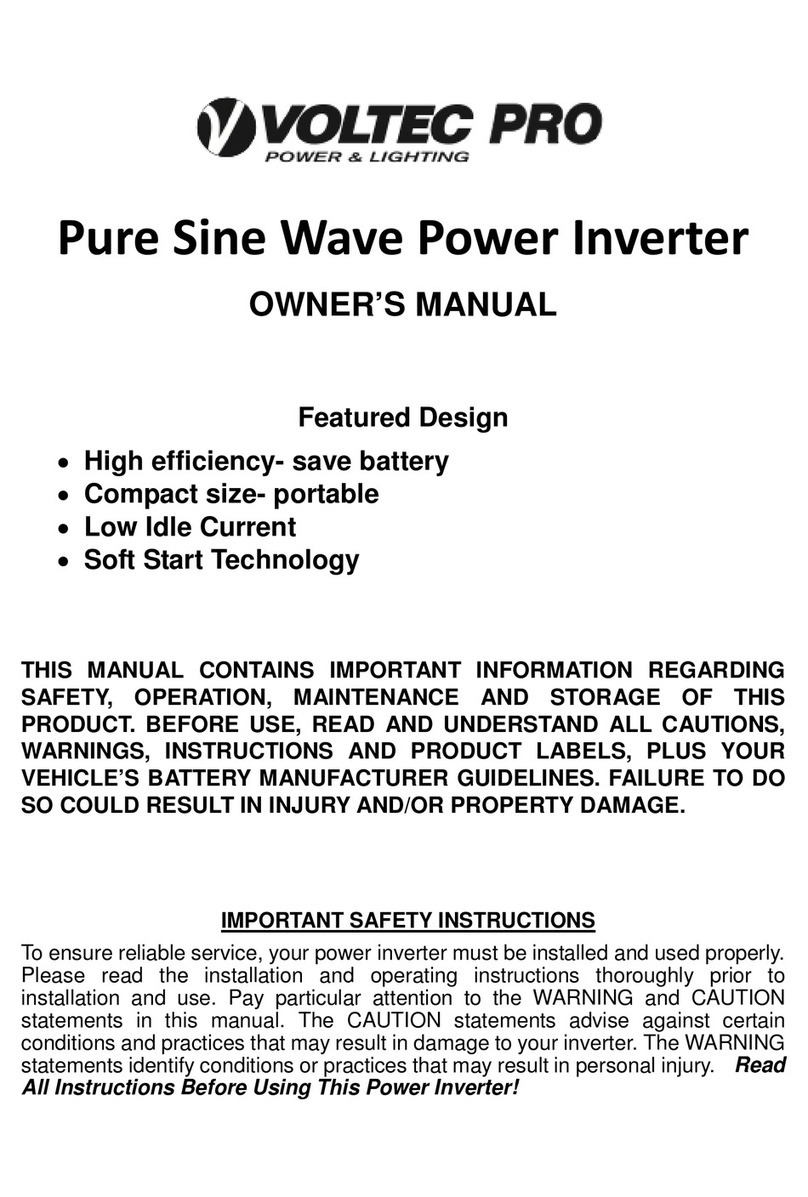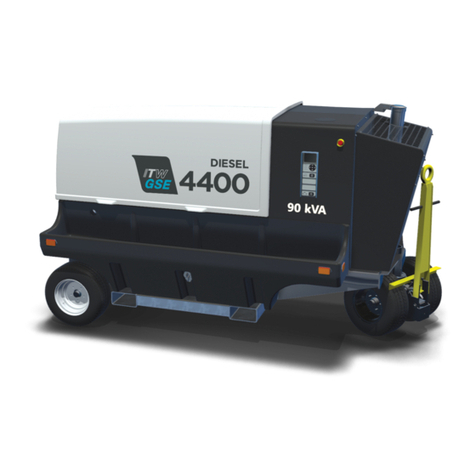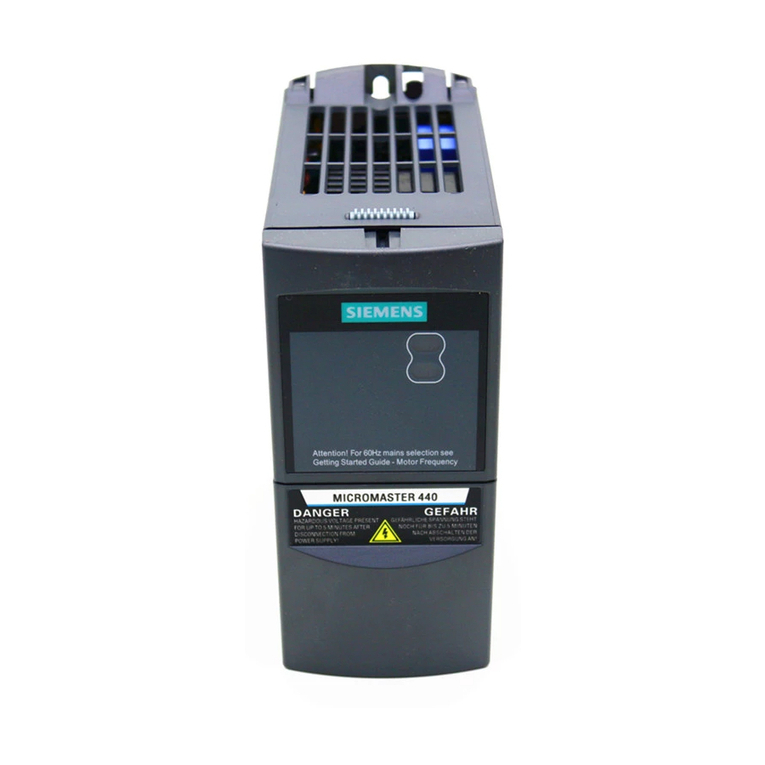Rockpals R2000i User manual

WARNING : To reduce the risk of injury, user must read this manual before assembling, opera ng
and maintaining this unit, You are responsible for opera ng the product properly & safely.
Version: V1.20170921
2000W DIGITAL INVERTER GENERATOR

2
WARNING!
Read the following instructions before using the product!
These instructions below are for your safety. Please read through them
thoroughly before use and retain them for future reference. Familiarize yourself
with them to reduce hazards like personal injuries and damage to property.
TABLE OF CONTENTS
Safety Rules.………………….…………………………………………………………………………2
Product Specifications.……….…………………………………………………………………….7
Know Your Inverter Generator…………………………………………………………….……8
Generator Preparation……….…..……………………………………………………….………12
Starting The Generator…………………………………………………………………………….14
Stopping The Generator…………………………………………………………………………..16
Subsequent Starting Of The Generator………………………………………………………..17
Using The Generator………………………………………………………………………………….…….19
Maintenance……………….…………………………………………………………………………..23
Storage……………….……………………………………………………………………………………31
Troubleshooting …………………….……………………………………………………………….33
Wiring Diagram……………….…….……………………………………………………………….35
A112001 Exploded View & Part List……………………………………………….………..36
A112002 Exploded View & Part List……………………………………………….………..41
SAFETY RULES
Read and observe all warnings,
cautions, and instructions on the
generator and in this owner’s manual
before operating your generator.
NOTE: The following safety
information is not meant to cover all
possible conditions and situations that
may occur. Read the entire Owner’s
Manual for safety and operating
instructions. Failure to follow
instructions and safety information
could result in serious injury or death.
This safety alert symbol is used to
identify safety information about
hazards that can result in personal
injury.
A signal word (DANGER,
WARNING, or CAUTION) is used with
the alert symbol to indicate the
likelihood and the potential severity
of injury. In addition, a hazard symbol
may be used to represent the type of
hazard.
DANGER indicates a hazard, which,
if not avoided, will result in death or
serious injury.

3
WARNING indicates a hazard, which,
if not avoided, could result in death or
serious injury.
CAUTION indicates a hazard, which,
if not avoided, might result in minor
or moderate injury.
CAUTION when used without the
alert symbol, indicates a situation that
could result in damage to the engine
or generator.
DANGER:
CARBON MONOXIDE
Using a generator indoors CAN KILL YOU
IN MINUTES.
Generator exhaust contains high levels
of carbon monoxide (CO), a poisonous
gas you cannot see or smell. If you can
smell the generator exhaust you are
breathing CO. But even if you cannot
smell the exhaust, you could be
breathing CO.
NEVER use a generator inside houses,
garages, crawlspaces, or other partly
enclosed areas. Deadly levels of carbon
monoxide can build up in these areas.
Using a fan or opening windows and
doors does NOT supply enough fresh air.
ONLY use a generator outdoors and far
away from open windows, doors, and
vents. These openings can pull in
generator exhaust.
Even if you use a generator correctly, CO
may leak into the house. ALWAYS use a
battery-powered or battery-backup CO
alarm in your house.
If you start to feel sick, dizzy, or weak
after the generator has been running,
move to fresh air RIGHT AWAY. See
a doctor. You could have carbon
monoxide poisoning."
WARNING:This generator
may emit highly flammable and
explosive gasoline vapors, which can
cause severe burns or even death if
ignited. A nearby open flame can lead to
explosion even if it isn’t directly in
contact with gasoline.
Do not operate near open flame.
Do not smoke near generator.
Always operate on a firm, level
surface.
Always turn generator off before
refueling. Allow generator to cool for at
least 2 minutes before removing fuel
cap. Loosen cap slowly to relieve
pressure in tank.
Do not overfill fuel tank. Gasoline
may expand during operation. Do not
fill to the top of the tank. Allow for
expansion.
Always check for spilled fuel before
operating.
Empty fuel tank before storing or
transporting the generator.
WARNING: This generator
produces powerful voltage, which can
result in electrocution.
ALWAYS ground the generator
before using it (see the “Ground the
Generator” portion of the “GENERATOR
PREPARATION” section).
Generator should only be plugged
into electrical devices, either directly or
with an extension cord. NEVER
connect to a building electrical system

4
without a qualified electrician. Such
connections must comply with local
electrical laws and codes. Failure to
comply can create a back-feed, which
may result in serious injury or death to
utility workers.
Use a ground fault circuit interrupter
(GFCI) in highly conductive areas such
as metal decking or steel work. GFCIs
are available in-line with some
extension cords.
Do not use in rainy conditions.
Do not touch bare wires or
receptacles (outlets).
Do not allow children or
non-qualified persons to operate.
WARNING: This generator
produces heat when running.
Temperatures near exhaust can exceed
150°F (65° C).
Do not touch hot surfaces. Pay
attention to warning labels on the
generator identifying hot parts of the
machine.
Allow generator to cool down after use
before touching engine or areas of the
generator that become hot during use.
CAUTION: Misuse of this generator
can damage it or shorten its life.
Only use generator for its intended
purposes.
Operate only on dry, level surfaces.
Allow generator to run for several
minutes before connecting electrical
devices.
Shut off and disconnect any
malfunctioning devices from
generator.
Do not exceed the wattage capacity of
the generator by plugging in more
electrical devices than the unit can
handle.
Do not turn on electrical devices until
after they are connected to the
generator.
Turn off all connected electrical
devices before stopping the generator.
Turn the engine switch to “OFF”
position when the engine is not
running.
IMPORTANT SAFETY
INSTRUCTIONS
SAVE THESE INSTRUCTIONS - This
manual contains important instructions
for the AAVIX 2000W inverter generator
that should be followed during
installation and maintenance of the
generator.
Generators vibrate in normal use.
During and after the use of the
generator, inspect both the generator
as well as extension and power supply
cords for damage resulting from
vibration. Have damaged items
repaired or replaced as necessary. Do
not use plugs or cords that show signs
of damage such as broken or cracked
insulation or damaged blades.
For power outages, permanently
installed stationary generators are
better suited for providing backup
power to the home. Even a properly
connected portable generator can
become overloaded. This may result in
overheating or stressing of the
components, possibly leading to a
generator failure.
DO NOT EXPOSE TO RAIN.

5
CHARGE ONLY 12V LEAD-ACID
BATTERIES. OTHER TYPES OF BATTERIES
MAY BURST CAUSING PERSONAL
INJURY AND DAMAGE.
RISK OF EXPLOSIVE GAS MIXTURE.
READ INSTRUCTIONS IN OWNER’S
GUIDE BEFORE USING CHARGER.
Never use it indoor. Fig.1
Never use it in a wet condition. Fig.2
Never directly connect it to a
house power system. Fig.3
Keep it at least 1m away from
inflammable. Fig.4
Never smoke when fueling. Fig.5
Don’t spill when fueling. Fig.6
Stop engine when fueling. Fig.7

6
CONNECTION TO A HOUSE
POWER SUPPLY
WARNING:If this generator is
used as a supply for a building’s wiring
system as a standby, the generator must
be installed by a qualified electrician and
connected to a transfer switch as a
separately derived system in accordance
with the National Electrical Code, NFPA
70. The generator shall be connected to
a transfer switch that switches all
conductors excluding the equipment
grounding conductor. The frame of the
generator shall be connected to an
approved grounding electrode. Any
improper connection may cause damage
to the generator, or cause a fire.
Fig.8
Fig.9
Fig.10
GENERATOR GROUND
CIRCUIT
In order to prevent electric shock due to
shoddy electrical appliances or wrong
use of electricity, the generator must be
grounded with a good-quality insulated
Conductor.
Fig.11
CAUTION:
Make sure the control panel, louver and
the inverter bottom side cooling well and
without chips, mud and water come in. it
may damage the engine, inverter or
alternator if the cooling vent blocked.
Do not mix the generator with other stuff
If moving, storing or running the unit.
It may cause the generator damage or
property safety issue when the generator
in leakage.

7
PRODUCT SPECIFICATIONS
Model
Generator
Type
Inverter
Rated Frequency (Hz) 60
Rated Voltage (V)
120
Rated Output Power (KW) 1.6
Max Output Power (KW)
2.0
Power Factor 1.0
Charging Voltage (DC)(V)
12
Charging Current (DC)(A) 8
Overload Protect (DC)
Non-fuse Protector
USB Port 5V, 1 A&2.1A
Phase
Single
Engine Engine Type
Single cylinder, 4-stroke, forced air
cooling, OHV
Displacement (cc) 79.7
Fuel Type Unleaded Gasoline
Fuel Tank Capacity 1 US gallon (4 liters)
Fuel Consump�on (g/KW·) ≤450
Con�nue Running Time
(at rated power)
4 hours
Oil Capacity
0.37 quarts (0.35 liters)
Spark Plug Model No. E6TC/E6RTC
Star�ng Mode Recoil Starter
Generator
Set
Length×Width×Height
480×285×390 (mm)
Net weight 47.4 lbs
R2000i

8
KNOW YOUR INVERTER GENERATOR
Fig.12
①
Carrying handle
⑤
Recoil starter
②
Fuel tank cap
⑥
Oil filler cap
③
Fuel tank cap air vent knob
⑦
Louver
④
Control panel
⑧
Muffler
ACCESSORIES
12V DC Battery charging cable
1
Spark plug socket
1
Oil funnel
1
Screw driver
1
Fig.13

9
Control Panel
Fig.14
1 Oil warning light 7 AC receptacle
2 AC pilot light 8 Fuel cock knob
3 Overload indicator light 9 Ground (earth)
terminal
4 Engine switch (Red) 10 Choke knob
5 Economy control switch
(Black)
11 DC protector
6 USB Port (1A/2.1A) 12 DC receptacle

10
CONTROL FUNCTION
Engine switch (Red)
Fig.15
1. Engine switch (Red) “STOP”;
Ignition circuit is switched off. The
engine will not run.
2. Engine switch (Red) “ON”;
Ignition circuit is switched on. The engine
can be running.
Oil warning light (yellow)
Fig.16
When the oil level falls below the lower
level, the oil warning light (yellow) comes
on and then the engine stops
automatically. Unless you refill with oil,
the engine will not start again.
NOTE: If the engine stalls or does not
start, turn the engine switch to “ON” and
then pull the recoil starter.
If the oil warning light (yellow) flickers for
a few seconds, the engine oil is
insufficient . Add oil and restart.
Overload indicator light (Red)
Fig.17
The overload indicator light (Red) comes
on when an overload of a connected
electrical device is detected, the inverter
control unit overheats, or the AC output
voltage rises. Then, the AC protector will
trip, stopping power generation in order
to protect the generator and any
connected electric devices. The AC pilot
light (Green) will go off and the overload
indicator light (Red) will stay on, but the
engine will not stop running.
When the overload indicator light (Red)
comes on and power generation stops,
proceed as follows:
1. Turn off any connected electric devices
and stop the engine.
2. Reduce the total wattage of connected
electric devices within the rated output.
3. Check for blockages in the cooling air
inlet and around the control unit.
If any blockages are found, remove.
4. After checking, restart the engine.
NOTE:The overload indicator light (Red)
may come on for a few seconds at first
when using electric devices that require a
large starting current, such as a
compressor or a submergible pump.
However, this is not a malfunction.
AC pilot light (Green)
Fig.18
The AC pilot light (Green) comes on when
the engine starts and produces power.
DC protector
The DC protector (11) turns to “OFF”
automatically when electric device being

11
connected to the generator is operating
and current above the rated flows. To use
this equipment again, turn on DC
protector by pressing its button to “ON”.
1. “ON”: Direct current is output.
2. “OFF”:Direct current is not output.
Fig.19
CAUTION:
Reduce the load of the connected electric
device below the specified rated output of
the generator if the DC protector turns off.
If the DC protector turns off again, stop
using the device immediately and consult
customer service center.
Economy control switch (ECS)
1. “ON”
When the ESC (5) switch(Black) is turned
to “ON”, the economy control unit
controls the engine speed according to
the connected load. The results are better
fuel consumption and less noise.
2. “OFF”
When the ECS switch (Black) is turned
to“OFF”, the engine runs at the rated
speed 5000r/min regardless of whether is
a load connected or not.
NOTE:
The ECS switch (Black) must be turned
to“OFF” when using electric devices that
require a large starting current, such as a
compressor of a submergible pump.
Fig.20
Fuel tank cap
Remove the fuel tank cap by turning it
counterclockwise.
Fig.21
Fuel tank cap air vent knob
Fig.22
The fuel tank cap is provided with an air
vent knob to stop fuel flow. The air vent
knob must be turned to “ON”. This will
allow fuel to flow to the carburetor and
the engine to run. When the engine is not
in use, turn the air vent knob to “OFF” to
stop fuel flow.
Ground (Earth) terminal
Fig.23
Ground (Earth) terminal connects the
earth line for prevention of electric shock.
When the electric device is earthed,
always the generator must be earthed.

12
GENERATOR
PREPARATION
USING THE GENERATOR FOR
THE FIRST TIME
The following section describes
steps necessary to prepare the generator
for use. If after reading this section, you
are unsure about how to perform any of
the steps please call for customer service.
Failure to perform these steps properly
can damage the generator or shorten its
life.
Step 1- ADD OIL
The generator is shipped without oil. User
must add the proper amount of oil before
operating the generator for the first time.
The oil capacity of the engine crankcase is
0.37 quarts (0.35 liters). For general use
(above 40° F), we recommend 30W,
4-stroke engine oil.
Do not start the engine till fill with the
sufficient engine oil.
Engine Oil Recommendations
Select good quality detergent oil bearing
the American Petroleum Institute (API)
service classifications SJ, SL, or SM.
(Synthetic oils may be used.) Use the ASE
viscosity grade of oil from the following
chart (Fig.24) that matches the starting
temperature anticipated before the next
oil changes.
Fig.24
Engine Oil Replacemendations
To add oil, follow these steps:
1. Make sure the generator is on a level
surface. Tilting the generator to assist in
filling will cause oil to flow into engine
areas and will cause damage. Keep
generator level!
2. Remove the screws ①, and then
remove the access panel ②.
Fig.25

13
3. Remove the dipstick from the engine.
Insert the oil funnel. (Fig.26)
Fig.26
4. Add oil slowly to bring level to full. (Fig.
27).
5.To check the oil level: wipe the dipstick
with a clean rag. Insert the dipstick into
the oil fill opening without screwing in.
Remove the dipstick to check the oil mark.
6. Slowly add more oil and repeat step 4
until the oil mark reaches to the top of the
dipstick (Fig.27). Do not over fill the
crankcase. The generator is equipped with
a low oil sensor and will not start if the
amount of oil is in sufficient.
7. Check for oil leaks. Tighten dipstick
firmly before closing the access panel.
Fig.27 OilFillOpening,DipstickandOilLevel
Step 2-ADD GASOLINE
DANGER:
This generator may emit highly
flammable and explosive gasoline
vapors, which can cause severe burns
or even death if ignited. A nearby open
flame can lead to explosion even if not
directly in contact with gasoline.
Use fresh (within 30 days from purchase),
lead-free gasoline with a minimum of 87
octane rating. Do not mix oil with
gasoline.
To add gasoline, follow these steps:
1. Make sure the generator is on a level
surface.
2. Unscrew fuel cap and set aside.
NOTE: The fuel cap may be tight and
hard to unscrew.
3. Slowly add unleaded gasoline to the
fuel tank up to the red level.①Red line
②Fuel level.
Be careful not to overfill. The capacity of
the fuel tank is 1 US gallon.NOTE: Do
not fill the fuel tank to the very top.
Gasoline will expand and spill over during
use when the fuel warms up even with the
fuel cap in place.
Fig.28
Fig.29
4. Reinstall fuel cap and wipe clean any
spilled gasoline with a dry cloth.
IMPORTANT:
• Use only unleaded gasoline. The use of
leaded gasoline will cause severe damage
to internal engine parts.

14
Recommended fuel: Unleaded gasoline
Fuel tank capacity: Total: 4.0L(1.06 US
gal, 0.88 lmp gal)
• Never use an oil/gasoline mixture.
• Never use old gasoline.
• Avoid getting dirt or water into the fuel
tank.
• Gasoline can age in the tank and make
starting difficult. Never store generator
for extended periods of time with fuel in
the tank.
• After fill the fuel, make sure the fuel
tank cap is tightened securely.
Fig.30
• Immediately wipe off spilled fuel with a
clean, dry, soft cloth, since fuel may
deteriorate painted surfaces or plastic
parts.
NOTE: Fuel deteriorates over
time. It may be DIFFICULT to
start the engine if you use fuel
which has been kept for more
than 30 days. Towards the end of the
season, it is advisable to put only as
much fuel in the tank as you need for
each use, since it should be completely
used up before storing the product.
Empty remaining fuel from the tank and
the CARBURETTOR when storing the
product for over 30 days.
Step 3-GROUND THE
GENERATOR
WARNING: Failure to properly
ground the generator can result in
electrocution.
Ground the generator by tightening the
grounding nut on the front control panel
against a grounding wire. A generally
acceptable grounding wire is a No. 12
AWG (American Wire Gauge) stranded
copper wire. This grounding wire should
be connected at the other end to a copper,
brass, or steel-grounding rod that is driven
into the earth. Wire and grounding rods
are not included in generator contents.
Grounding codes can vary by location.
Contact a local electrician to check the
area codes.
Fig.31
NOTE: After completing the above
preparation, the generator is ready to be
started.
STARTING THE
GENERATOR
Before starting the generator, make sure
you have read and performed the steps in
the “Generator Preperation” section of
this manual. If you are unsure about how
to perform any of the steps in this manual
please call customer service center.
DANGER: CARBON
MONOXIDE.
Using a generator indoors CAN KILL YOU
IN MINUTES.

15
Generator exhaust contains carbon
monoxide (CO). This is a poison gas you
cannot see or smell. If you can smell the
generator exhaust, you are breathing CO.
Even if you cannot smell the exhaust, you
may be breathing CO.
NEVER use a generator inside homes,
garages, crawlspaces, or other partly
enclosed areas. Deadly levels of carbon
monoxide can build up in these areas.
Using a fan or opening windows and doors
does NOT supply enough fresh air.
ONLY use a generator outside and far
away from windows, doors, and vents.
These openings can pull in generator
exhaust. Even if you use a generator
correctly, CO may leak into the home.
ALWAYS use a battery- powered or
battery-backup CO alarm in the home.
If you start to feel sick, dizzy, or weak
after the generator has been running,
move to fresh air RIGHT AWAY. See a
doctor. You may have carbon monoxide
poisoning.
WARNING: This generator
produces powerful voltage, which can
result in electrocution.
ALWAYS ground the generator before
using it (see the “Ground the Generator”
portion of the “Generator Preperation”
section).
Generator should only be plugged into
electrical devices, either directly or with
an extension cord. NEVER connect to a
building electrical system without a
qualified electrician. Such connections
must comply with local electrical laws and
codes. Failure to comply can create a
back-feed, which may result in serious
injury or death to utility workers.
-Use a ground fault circuit interrupter
(GFCI) in highly conductive areas such as
metal decking or steel work. GFCIs are
available in-line with some extension
cords.
-Do not use in rainy or wet conditions.
-Do not touch bare wires or receptacles
(outlets).
-Do not allow children or non-qualified
persons to operate.
CAUTION:Disconnect all electrical
loads from the generator before
attempting to start.
STARTING THE ENGINE
1. Turn the ECS switch(Black) to “OFF”.
Fig.32
2. Turn the air vent knob to “ON” .
Fig.33
3. Turn the fuel cock knob to “ON”.
Fig.34
4. Turn the engine switch (Red) to “ON”.
Fig.35

16
5. Pull the choke knob fully out.
Fig.36
WARNING: The choke is not
required to start a warm engine. Push the
choke knob fully in.
6. Pull slowly on the recoil starter until it is
engaged, then pull it briskly.
NOTE: Grasp the carrying handle firmly
to prevent the generator from falling over
when pulling the recoil starter.
Fig.37
7. After the engine starts, warm up the
engine until the engine does not stop.
Then press push the choke knob fully in.
Fig.38
NOTE: When starting the engine, with
the ESC “ON”, and there is no load on the
generator:
• In ambient temperature below
0℃(32℉), the engine will run at the rated
r/min (5000r/min) for 5 minutes to warm
up the engine.
• In ambient temperature below
5℃(41℉) , the engine will run at the
rated r/min (5000r/min) for 3 minutes to
warm up the engine.
• The ESC unit operates normally after the
above time period, while the ECS switch
(Black) is “ON”.
ECO-MODE IDLE CONTROL
SWITCH
This generator is equipped with an
Eco-Mode Idle Control Switch. Engaging
the switch will automatically adjust the
engine speed to match the load at hand.
When an electrical device comes on line,
the generator engine will automatically
speed up to supply the power needed and
will slow down as the need decreases. The
variable engine speed can reduce fuel
consumption and noise level. Keep this
switch engaged when the power load
requirement is less than 1000W. Do not
engage the Idle Control Switch when the
total load is more than 1000W. The
generator engine must run at full speed to
supply the required power for anything
over 1000W.
STOPPING THE
GENERATOR
To Stop The Generator
1. Turn off all electrical devices prior to
unplugging them from the generator.
NOTE: Unplugging running devices can
cause damage to the generator.
2. Turn the ECS switch (Black) to “OFF”.
Fig.39

17
2. Disconnect any electric devices.
Fig.40
3. Turn the engine switch (Red) to
“STOP” .
Fig.41
4. Turn the fuel cock knob to “OFF”.
Fig.42
5. Turn the fuel tank cap air vent knob to
“OFF” after the engine has completely
cooled down.
Fig.43
WARNING: Allow the generator
to cool for several minutes before
touching areas that become hot during
use.
CAUTION: Allowing gasoline to sit in
the fuel tank for long periods of time can
make it difficult to start the generator in
the future. Never store the generator for
extended periods of time with fuel in the
fuel tank. Drain off the gasoline in the
carburettor. Refer to “Generator Storage
“Section.
SUBSEQUENT
STARTING OF
THE GENERATOR
PRE-OPERATION CHECK
WARNING:
If any item in the Pre-operation check is
not working properly, have it inspected
and repaired before operating the
generator.
The condition of a generator is the
owner’s responsibility. Vital components
can start to deteriorate quickly and
unexpectedly, even if the generator
unused.
NOTE: Pre-operation checks should be
made each time the generator is used.
If this is not the first time using the
generator, the user should take the
following steps to prepare it for
operation.
IMPORTANT: At this point the
user should be familiar with the
procedures described in the section titled
“Using the Generator for the First Time.”
If the user has not yet read this section, go
back and read it now.
Step 1 - CHECK THE OIL
Oil consumption is normal during
generator use. The generator is equipped
with a low oil pressure shutoff to protect
it from damage. The oil level of the engine

18
should be checked before each use to
ensure that the engine crankcase contains
sufficient lubricant.
To check or add oil, follow these steps:
1. Place the generator on a level
surface.
2. Check oil level in engine: Open
access panel. Clean around oil fill hole.
Remove dipstick and wipe the dipstick
with a clean rag. Insert the dipstick into
the oil fill opening without screwing in.
Remove the dipstick to check the oil
mark. Add recommended oil if the oil
mark covers less than specified level.
3. Slowly add more oil and repeat step
2 until the oil mark reaches to the top
of dipstick (Fig.44). Do not over fill the
crankcase.
Fig.44 OilFillOpening,DipstickandOilLevel
4. Tighten dipstick firmly then put back
access panel before starting the engine.
5. Check generator for oil leakage.
The point where abnormality was
recognized by use.
6. Check operation. If necessary, add
recommended oil to specified level.
Step 2 - CHECK THE FUEL
LEVEL
Before starting the generator, check to
see that there is sufficient gasoline in
the fuel tank. Add additional gasoline
as necessary but leave sufficient room
in tank for expansion.
WARNING: This generator
may emit highly flammable and
explosive gasoline vapors, which can
cause severe bums or even death if
ignited. A nearby open flame can lead
to explosion even if not directly in
contact with fuel.
Do not operate near open flame.
Do not smoke near generator.
Always operate on a firm, level
surface.
Always turn generator off before
refueling. Allow generator to cool for
at least 2 minutes before removing
fuel cap. Loosen cap slowly to relieve
pressure in tank.
Do not overfill fuel tank. Gasoline
may expand during operation. Do not
fill to the top of the tank. Allow for
expansion.
Always check for spilled fuel before
operating. Clean up any spilled fuel
before starting.
Empty fuel tank before storing or
transporting the generator.
Before transporting, turn fuel the air
vent knob to OFF position.
IMPORTANT:
Use only UNLEADED gasoline.
Do not use old gasoline.
Never use an oil/gasoline mixture.
Avoid getting dirt or water into the
fuel tank.

19
Step 3 - GROUND THE
GENERATOR
WARNING: Failure to
properly ground the generator can
result in electrocution.
Ground the generator by tightening
the grounding nut on the front control
panel against a grounding wire. A
generally acceptable grounding wire is
a No. 12 AWG (American Wire Gauge)
stranded copper wire. This grounding
wire should be connected at the other
end to a copper, brass, or
steel-grounding rod that is driven into
the earth. Wire and grounding rod are
not included in generator contents.
Fig.45
Grounding codes can vary by location.
Contact a local electrician for area
codes.
USING THE
GENERATOR
WARNING: When this
generator is used on a building’s wiring
system, the generator must be installed
by a qualified electrician and connected
to a transfer switch as a separately
derived system in accordance with the
National Electrical Code, NFPA 70. The
generator shall be connected to a
transfer switch that switches all
conductors other than the equipment
grounding conductor. The frame of the
generator shall be connected to an
approved grounding electrode.
For power outages, permanently
installed stationary generators are
better suited for providing backup
power to the home. Even a properly
connected portable generator can
become overloaded. This may result in
overheating or stressing the machine’s
components, possibly leading to a
generator failure.
Before connecting electrical devices,
allow the generator to run for a few
minutes to stabilize the speed and
voltage output.
CAUTION: Become familiar with the
markings on the panel before
connecting electrical devices.
Connect electrical devices running on
AC current according to their wattage
requirements. The chart in Fig 46
shows the rated and surge wattage of
the generator.
The rated (running) wattage is the
wattage the generator can produce
on a continuous basis.
The surge wattage is the maximum
amount of power the generator can
produce for an extremely short period
of time (seconds). Many electrical
devices such as refrigerators require
short bursts of extra power in
addition to the rated wattage listed
by the device to start their motors.

20
The surge waage ability of the
generator covers this extra power
requirement.
Item
Rated
(Running)
Surge
A2000i 1600 2000
Fig.46 - Generator
The total runnige requirement
of the electrical devices connected to
the generator should not exceed the
the generator itself.
To calculate the total
requirement of the electrical devices
you plan to connd the rated (or
age of each device. This
number should be listed somewhere on
the device or in itual.
If thi
calculate ilying the Voltage
requirement by the Amperage drawn:
A
When the rated wnt
of each electrical device has been
determined, add these numbers to nd
the total ratIf this
number exceeds t of
the generator, DO NOT connect all
these devices. Selen of
electrical devices, which have a total
lower than or equal to
ge of the generator.
CAUTION: The generator can run at
age capacity for only a
nect electrical devices
requiring a rated (running) wa
equal to or less than the rated waage
of the generator. Never connect
devices requiring aqual
to the surge wa of the generator.
This can trip the circuit protectors
(circuit breakers).
NOTEa
electrical device . Once the electrical
devices that will be powered by the
generator have been determined,
connect these devices according to the
following procedure:
1. Plug in each electrical device, making
sure that the device is turned o.
2. erload light and power
indicator light. If the overload light is on,
unplug the electronics, then restart the
generator before plugging the load
back in. If the rese
reset, wait several minutes and try
again. If the power ligh
come on, call the customer service
number for further instrucons.
CAUTION: Do not connect 50Hz
loads to the generator.
SOME NOTES ABOUT POWER CORDS
Long or thin cords can drain the power
provided to an electrical device by the
generator. When using such cords,
allow for a slightly higher rated waage
requirement by the electrical device.
See Fig.47 for recommended cords
based on the power requirement of the
electrical device.
Device
Requir
ement
2.5
5
7.5
10
15
300
600
900
1200
1800
Cord
Length
#8
wire
NR
NR
NR
NR
NR
#10
wire
NR
NR
350
250
150
Other manuals for R2000i
1
Table of contents
Other Rockpals Inverter manuals
Popular Inverter manuals by other brands

XanLite
XanLite LSBK3SOLARRVB user manual
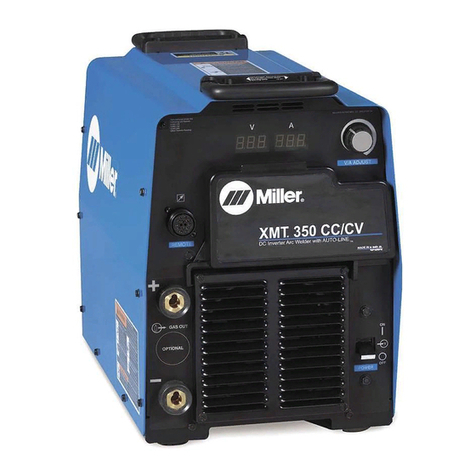
Miller
Miller XMT 350 CC/CV Auto-Line owner's manual
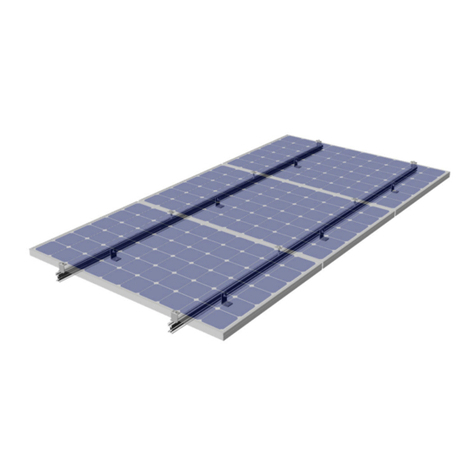
PREFORMED LINE PRODUCTS
PREFORMED LINE PRODUCTS POWER RAIL P8 Assembly instructions
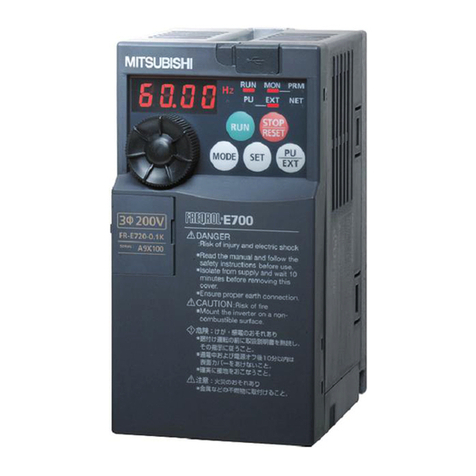
Mitsubishi Electric
Mitsubishi Electric FR-E720-0.1K instructions
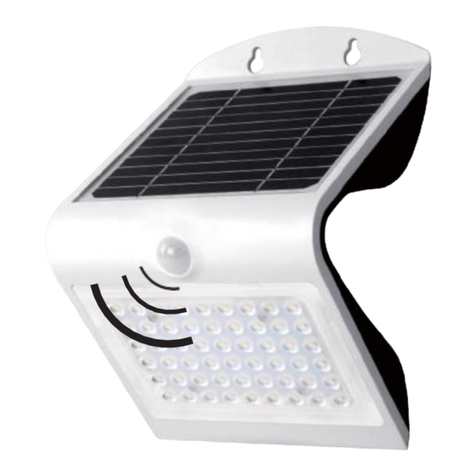
Corep
Corep LI101 user manual
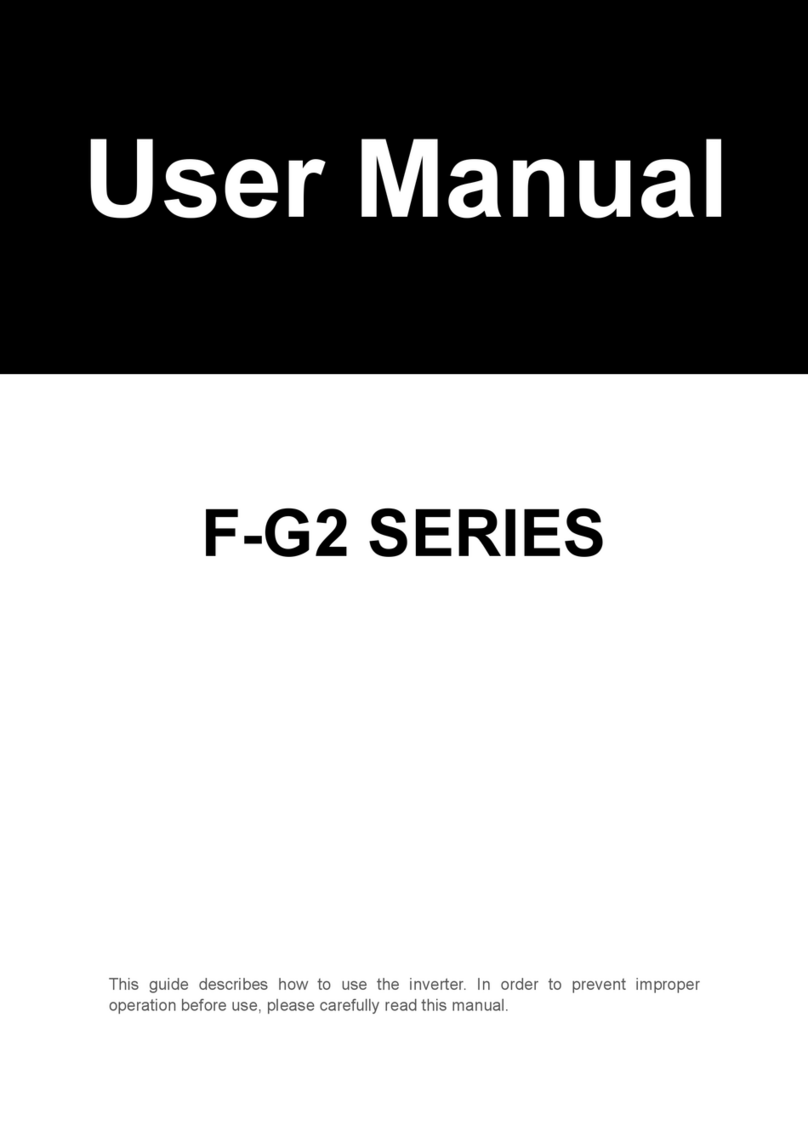
FoxESS
FoxESS F-G2 Series user manual

Sealey
Sealey TIG160HF instructions

Mitsubishi Electric
Mitsubishi Electric Climaveneta i-BX-004-013M Installation, operation and service manual

Generac Power Systems
Generac Power Systems MB375 Features
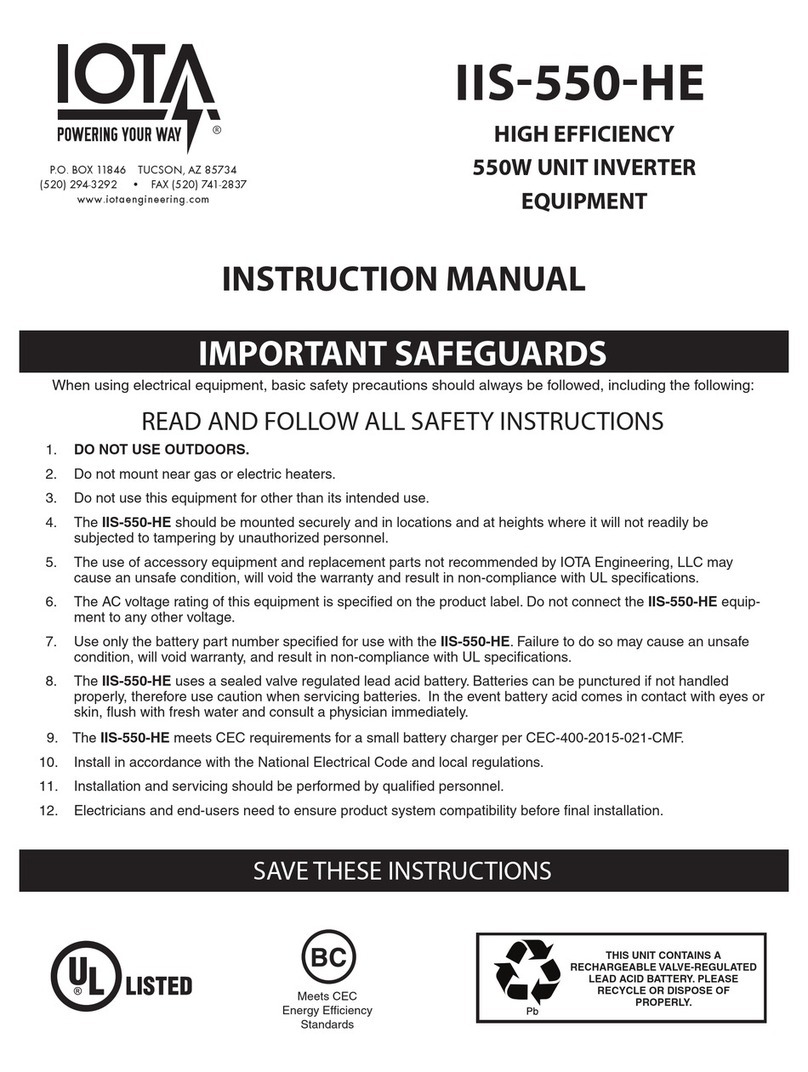
IOTA
IOTA IIS-550-HE instruction manual

Good Will Instrument
Good Will Instrument GFG-3015 Operation manual

Siemens
Siemens SINAMICS G120 Original instructions
